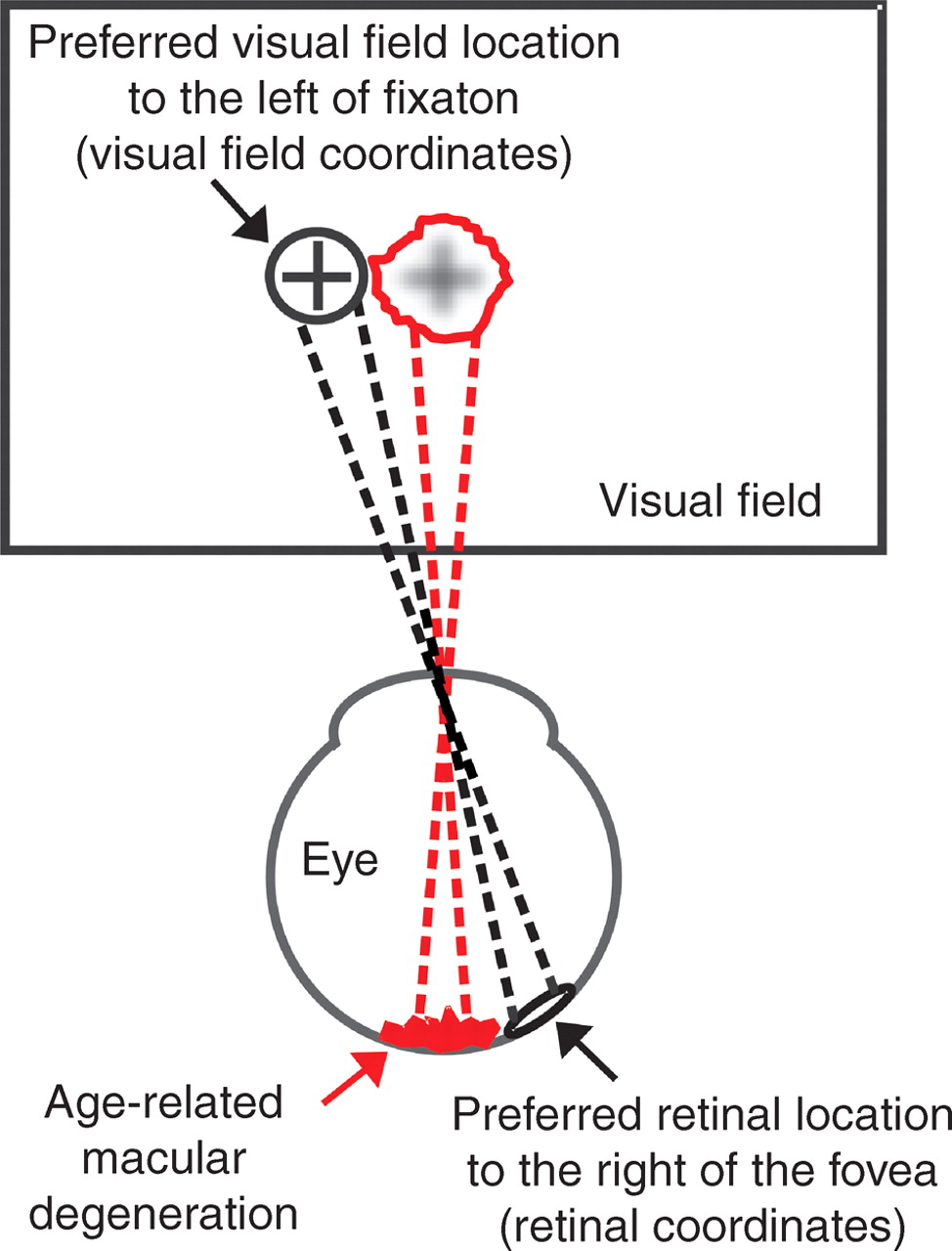[vc_row][vc_column][vc_column_text]If you or someone you know has lost vision, you may want to learn the skill of eccentric viewing and take optimum advantage of your remaining vision. This method of using one’s peripheral field to take over the central field can restore some lost abilities and help you navigate the world. Some who learn it regain the ability to read.
Also known as Preferred Retinal Loci (PRL), eccentric viewing involves looking slightly away from the subject in order to view it peripherally. This practice is similar to people who naturally look slightly away from objects at night in order to see them better; thus, engaging their rod cells, which makes it easier to view in dim light. The viewer with macular degeneration can access the rod cells in the peripheral field to take over for the cone cells in the central field.
In normal light, images become focused onto the macula at the center of the retina—where the cone cells are most dense. The cone cells give us the ability to see color and fine detail, and, when they degenerate as a result of macular degeneration or similar diseases, it becomes difficult to see. The rod cells can be taught to take over and become a reasonable substitute. It takes proper training and adaptations as well as concentrated practice to learn to use the peripheral field, but it can be learned in about six visits with the help of a trained low-vision therapist and practice at home.
A vision rehabilitation professional—such as the ones at Ensight—can work with you to identify the blind areas. Next, she will show you how to work around those areas using techniques, such as tracing, identifying cards, and other methods. The training won’t fully restore detail vision, but vision can be greatly improved with the help of enlargement, enhanced contrast, and appropriate magnification devises. The restoration in the ability to read is determined by each individual’s visual condition and determination. To watch a video on this technique, visit Macular Disease Society Film.
If you would like to learn to use eccentric viewing, Ensight’s occupational therapists can provide full training as well as follow-up assistance. Contact Ensight today to learn more about eccentric viewing and whether it’s right for you.[/vc_column_text][/vc_column][/vc_row]
